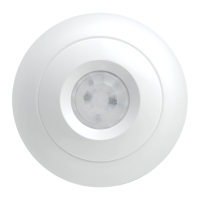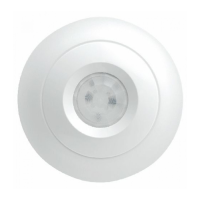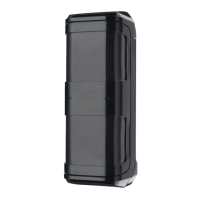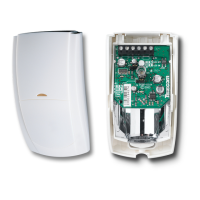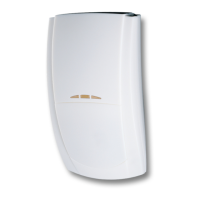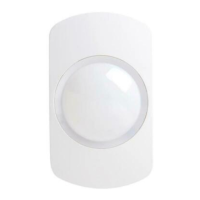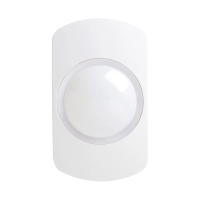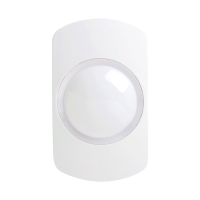INS542-5 15/52
On either power-up or reapplication of the front cover the detector will
temporarily enter an auto-optimisation mode to adapt to it’s environment.
This will be shown by the LED’s flashing in sequence. Allow 3 minutes for the
optimisation to complete.
During optimisation ensure that there are no obstructions in close proximity
(<1m) to the detector that will not be present during normal operation, as
this could trigger a false masking signal.
6. Detector set up
6.1. Input Functions
6.2. AMDT LED Functions
6.3. AMQD LED Functions
7. Triple End-Of-Line (T-EOL)
The detector is designed to be connected to a single zone on control panels which
feature Triple End-Of-Line compatibility. Alarm, Tamper, Fault and Masking are
signalled on one pair of wires. To aid installation the resistor values can be
selected via the on-board jumpers (AMQD) or via the T-EOL plug-on board (AMDT).
All the connections are normally closed. Masking is signalled by the alarm and
fault relays opening simultaneously.
Fault Monitoring - A fault will be indicated by one of the following:
Supply input voltage out of specification
PIR sensor malfunction
Microwave sensor malfunction
The fault will be cleared once the condition has been resolved.
This detector is capable of performing a self-test. There are two types of self-test;
a local self-test and a remote self-test.
Local Self-Test
Local self-test is controlled by the detector and runs periodically to test the

